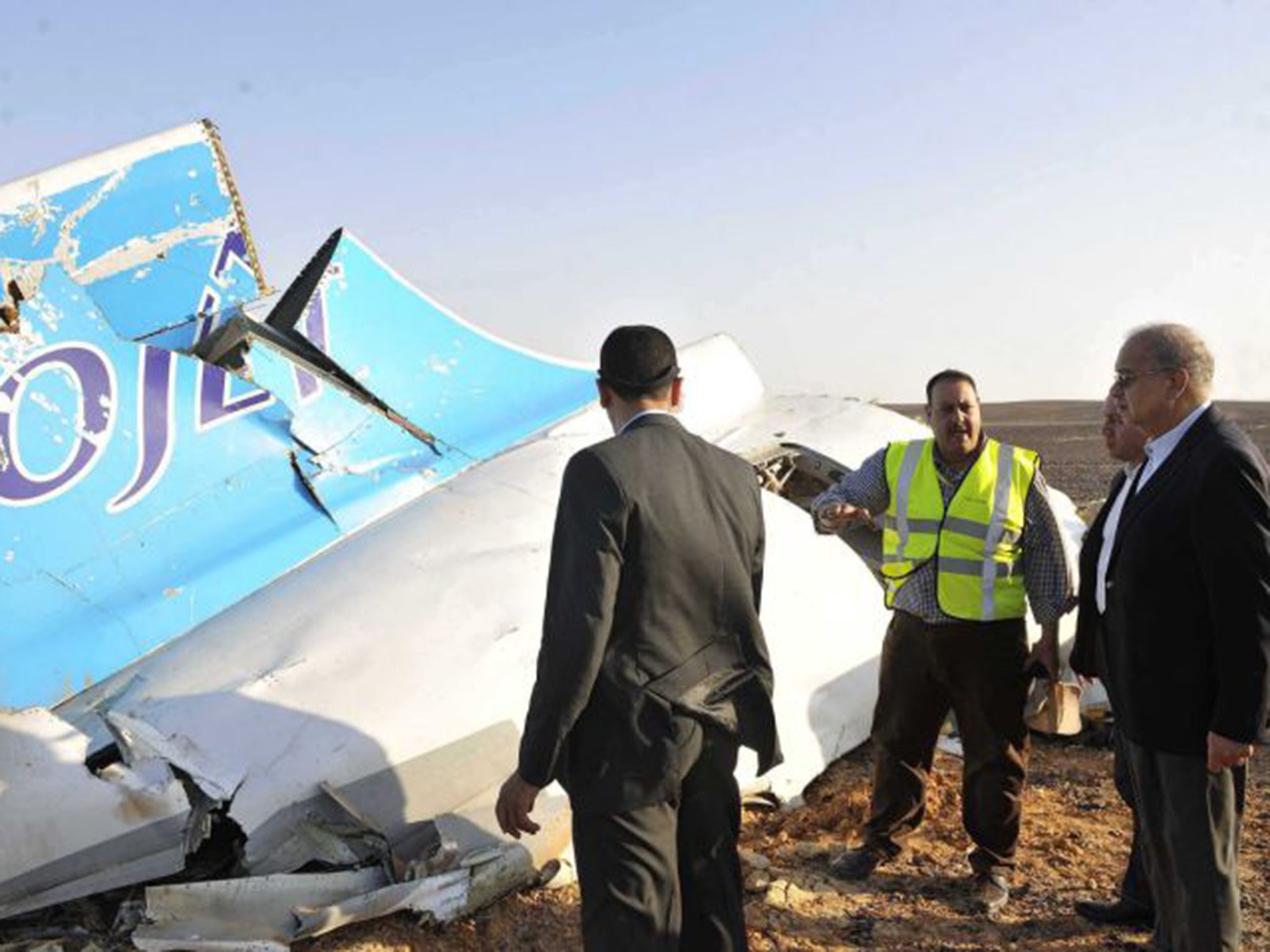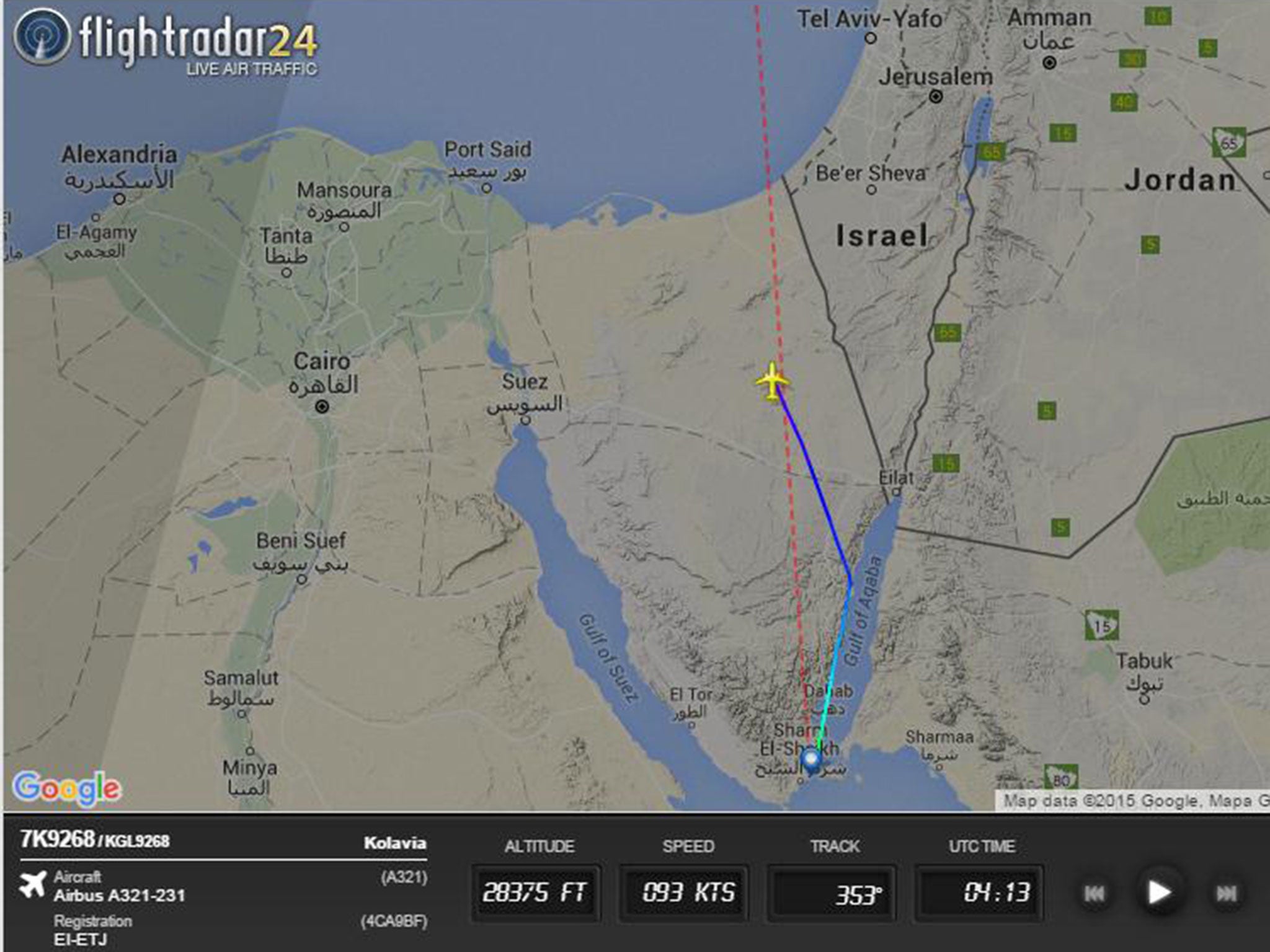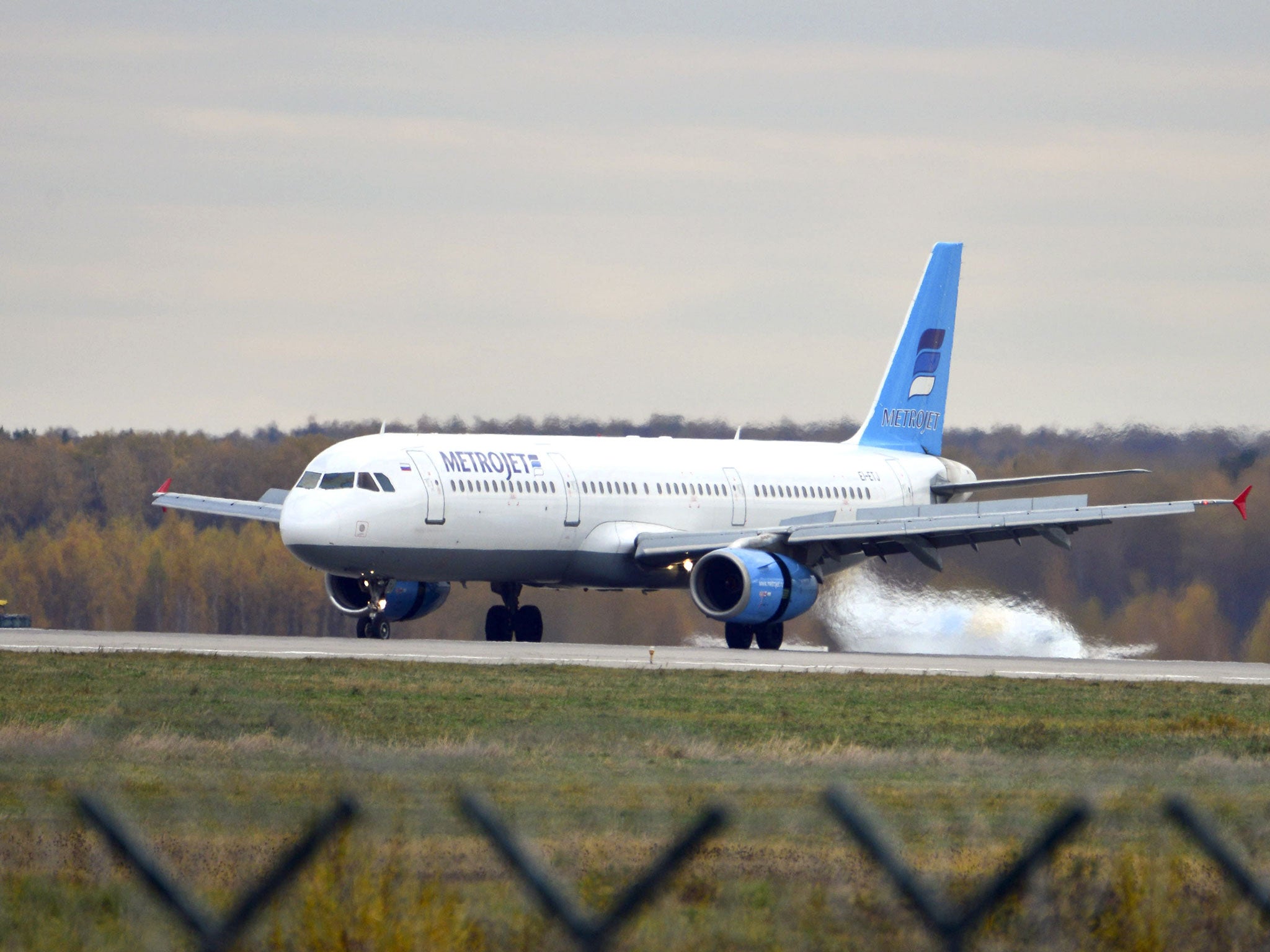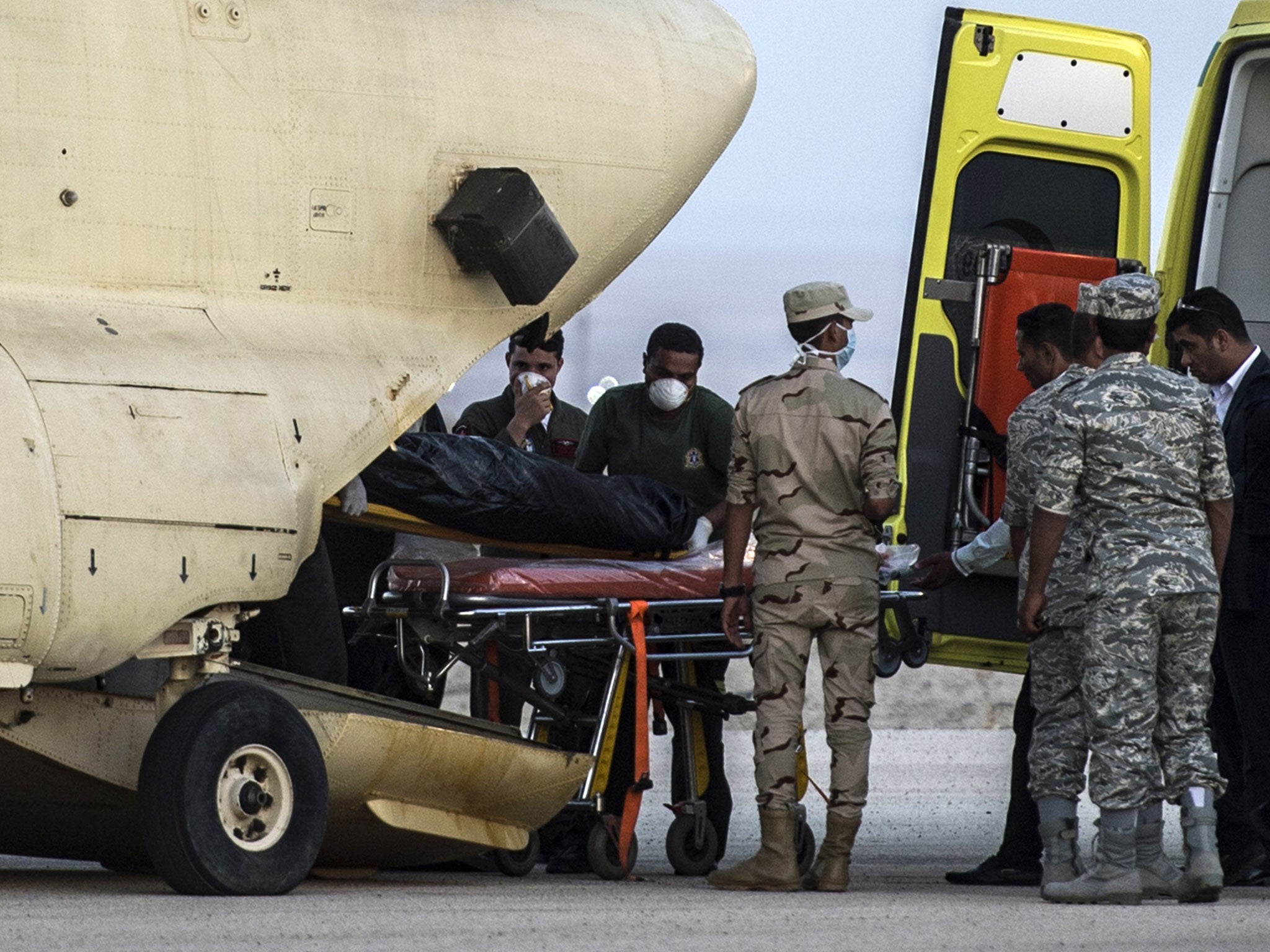Egypt plane crash: What we know so far about Metrojet flight 9268
Authorities are working to establish the cause of the crash after refuting Isis' claim that militants downed the plane

Your support helps us to tell the story
From reproductive rights to climate change to Big Tech, The Independent is on the ground when the story is developing. Whether it's investigating the financials of Elon Musk's pro-Trump PAC or producing our latest documentary, 'The A Word', which shines a light on the American women fighting for reproductive rights, we know how important it is to parse out the facts from the messaging.
At such a critical moment in US history, we need reporters on the ground. Your donation allows us to keep sending journalists to speak to both sides of the story.
The Independent is trusted by Americans across the entire political spectrum. And unlike many other quality news outlets, we choose not to lock Americans out of our reporting and analysis with paywalls. We believe quality journalism should be available to everyone, paid for by those who can afford it.
Your support makes all the difference.Families of the 224 people killed in a plane crash in Egypt are flying to the disaster site this evening as investigations continue into what caused the disaster.
All passengers and crew members on board Metrojet flight 9268 died when it went down in the Sinai peninsula on Saturday morning just minutes into its journey.
Here is what we know so far:
What happened?
The Airbus A321, operated by Metrojet, took off for St Petersburg from the holiday resort of Sharm el-Sheikh at 5.58am local time (3.58am GMT) carrying 224 people.
Egyptian officials said the pilot radioed air traffic control to report technical difficulties and planned an emergency landing at the nearest airport before losing contact with air traffic controllers.
The plane vanished from radar screens at 6.20am it vanished from radar screens while flying at an altitude of 31,000ft over the mountainous area of Arish.
According to FlightRadar24, a Sweden-based flight tracking service, the aircraft slowed and then descended rapidly at about 6,000 feet per minute before it disappeared.

“It was climbing quite normally when after 23 minutes when it passed 30,000ft it suddenly started to lose speed,” analyst Mikail Robertson told the BBC.
“It went down from 400 knots to 62 knots and then it suddenly started to drop very fast…after about 20 seconds we lost the signal from this aircraft.”
Egyptian investigators believe the plane dropped vertically, with parts of it catching fire as it fell from the sky.
What caused the crash?
Isis has claimed responsibility for downing the Russian plane, despite authorities claiming a technical problem caused the disaster.
A statement published by Isis’ propaganda agency said: “The fighters of the Islamic State were able to down a Russian plane over Sinai province that was carrying over 220 Russian crusaders. They were all killed, thanks be to God.”
It did not say how the aircraft was supposedly taken down but supporters were also sharing a video claiming to show it exploding and going down trailing smoke, which many viewers dismissed as fake.
Egyptian authorities said there was no evidence that the plane was struck or blown up and that initial investigations showed technical issues were to blame.
An official from the Aviation Incidents Committee said the pilot had radioed air traffic control to report technical difficulties and planned an emergency landing at the nearest airport before losing contact with air traffic controllers.
But Kogalymavia, the company that owns Metrojet, appeared to contradict the account by claiming the plane was in “full working order” and being operated by an extremely experienced crew.

What plane was it?
The plane was an Airbus A321-200 with the registration number EI-ETJ.
Manufactured in 1997, it had been operated by Metrojet since 2012 and accumulated 56,000 flight hours in nearly 21,000 journeys.
It was powered by IAE-V2500 engines and had a capacity of 240 passengers.
A history of the aircraft posted by the Aviation Safety Network showed its only previous incident was a tail-strike accident that occurred in 2001 during a landing in Cairo.
A spokesperson for Metrojet said it had been maintained according to international regulations and had undergone routine pre-flight checks..
The A321-200 is the largest member of the Airbus A320 family, which is used by more than 300 operators worldwide.

Who were the passengers?
A 10-month-old baby flying home with her parents is believed to be the youngest victim of the crash.
At at least 17 children were among passengers on the Airbus A321, with 138 women and 62 men, according to Egyptian officials who said that except for three Ukrainians, all the victims were Russian.
Two siblings aged two and three were also on the plane, according to the manifest published by the Association of Tour Operators of Russia (ATOR).
Other children were aged between two and 11, with several teenagers also on board.
Names on the list suggested that the majority of passengers were travelling in family groups, believed to be mainly tourists returning to Russia from holidays in Egypt’s Red Sea resorts.
One woman would have been celebrating her 35th birthday tomorrow.

What happens next?
Egyptian and Russian officials are co-operating to recover the victims, identify them and repatriate their bodies to Russia and Ukraine.
Their relatives are being offered free flights to Egypt and Metrojet said it would also pay them an undisclosed amount of compensation. Families are being offered counselling and support.
Meanwhile, the wreckage will be recovered and analysed by investigators to establish the cause of the crash.
Russian officials are also questioning staff at Metrojet and a tour agency that contracted for the flight, as well as analysing fuel where the plane was last topped up in Samara.
Egypt's foreign minister has promised to work closely with Russian officials and experts and said Moscow would be allowed as much involvement as possible.
Vladimir Putin declared Sunday a day of national mourning in Russia.

Additional reporting by agencies
Join our commenting forum
Join thought-provoking conversations, follow other Independent readers and see their replies
Comments